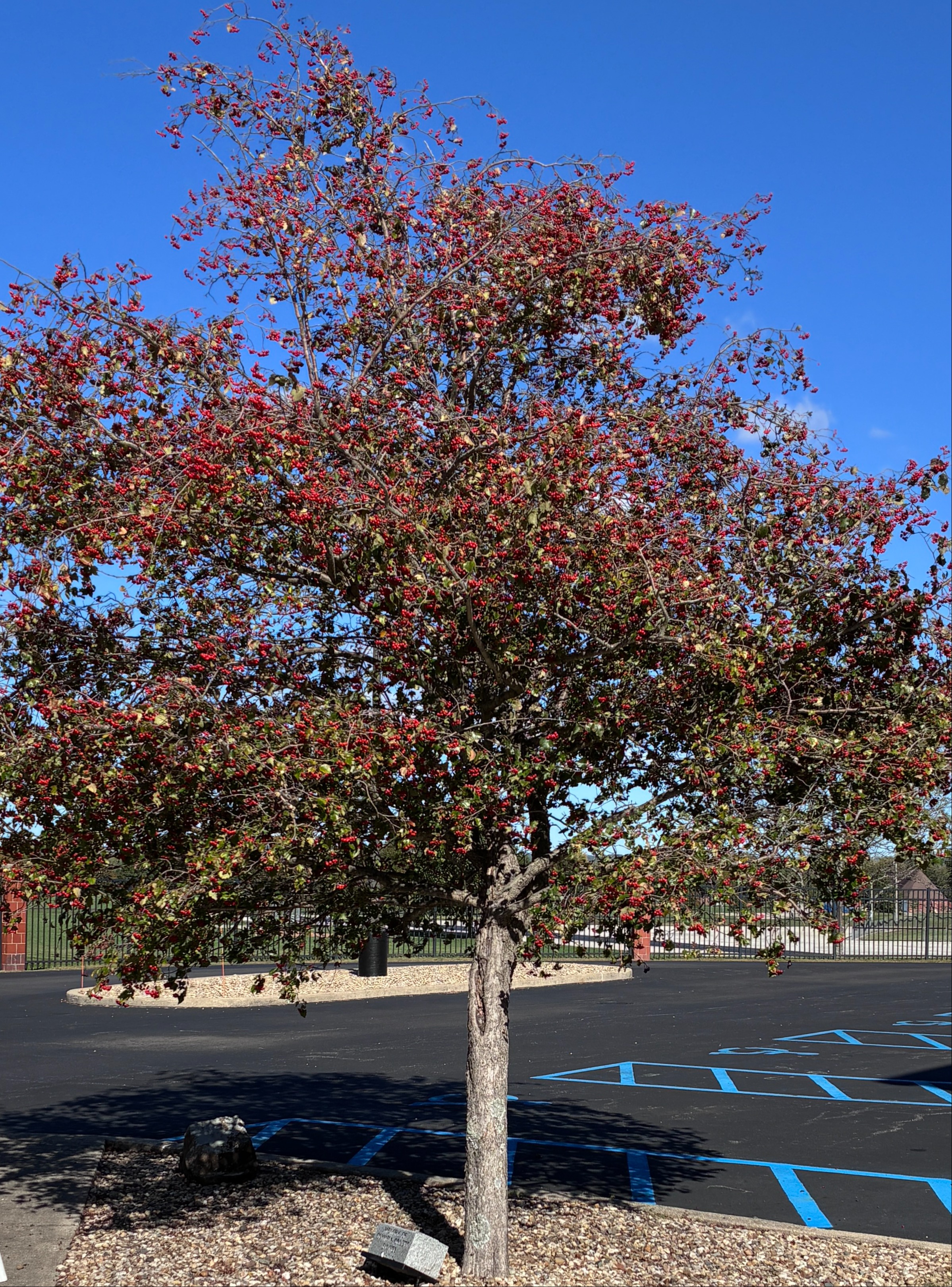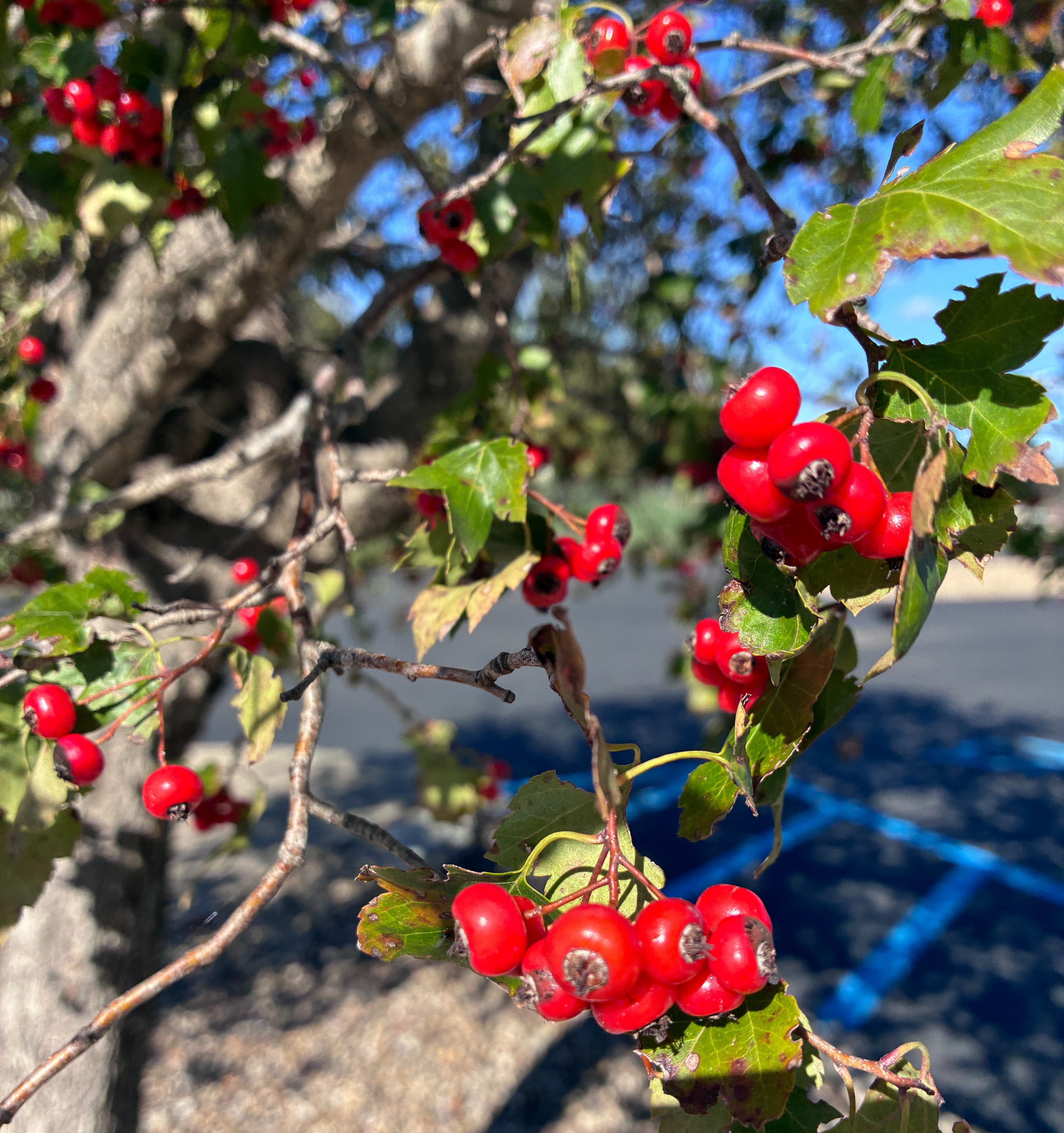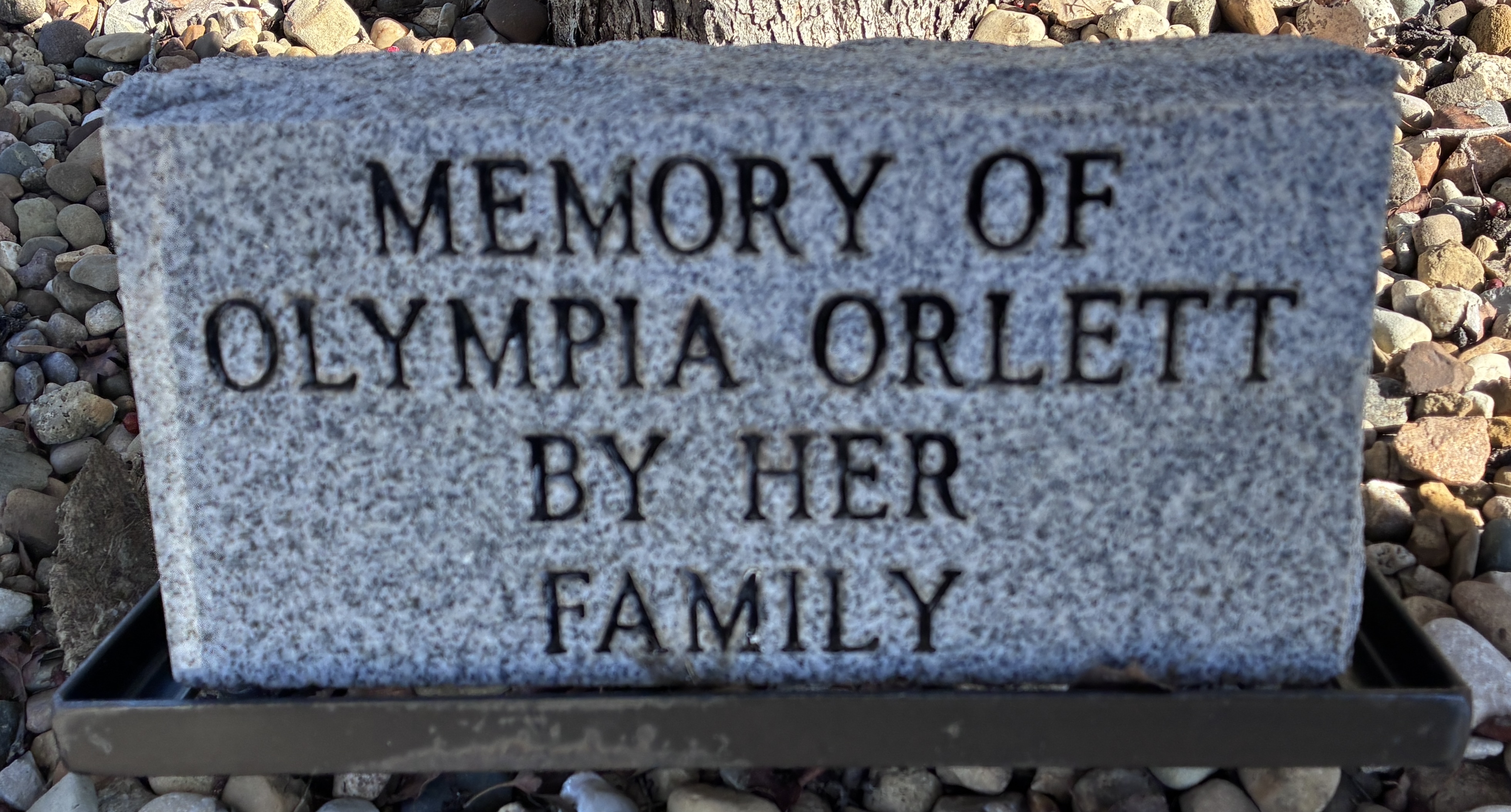
Photo Credits: Dr. Loretta W. Harvey
Scientific Name: Crataegus spp.
Common Name: Hawthorn, Quick thorn, Thornapple, May-tree
Type: Deciduous Tree
Family: Rosaceae
Native Range: Northern Hemisphere
USDA Zone: 3 to 8
Height: 15 to 35 feet
Spread: 15 to 35 feet
Bloom Time: Mid to Late Spring (May to early June)
Bloom Description: Clusters (corymbs) of small, 5-petaled flowers, most commonly white, though some cultivars are pink or red. Many species emit a malodorous (unpleasant) fragrance.
Sun: Full sun to partial shade
Water: Medium moisture; generally requires average, well-drained soil.
Maintenance: Requires pruning to develop a strong structure and can be susceptible to pests and diseases, necessitating observation or treatment.
Leaf Type/Shape: Alternate, simple, dark green leaves that are often lobed/serrated (toothed) along the margins.
Attracts: Birds (shelter/winter food source), Butterflies and other nectar-feeding insects
Other Info: Characterized by the presence of thorns (spines) on the branches, typically 1 to 3 inches long. Fruits are small pome-type, called haws, which mature to yellow, orange, red, or black.
Tolerate: Drought, wide range of soil types, urban pollution, and wind.
Invasive: Generally not considered invasive but some non-native species can spread in disturbed areas.
Climate: Hawthorns thrive in temperate climates and are valued for their extreme hardiness (down to Zone 3). They tolerate a range of soil and moisture conditions, from moist stream banks to drier, upland soils, making them highly adaptable to various regional climates.
Noteworthy Characteristics: Four Seasons of Interest-Hawthorns offer a succession of visual appeal: showy spring flowers, attractive summer foliage, vibrant fall color, and persistent, colorful fruit (haws) that provide winter interest long after the leaves have dropped. Wildlife Value-The persistent haws are an important food source for birds throughout the winter, and the thorny branches provide excellent, safe cover. Strong Wood-The genus name Crataegus comes from the Greek kratos, meaning "strength," referring to the very hard, dense wood.
Problems: Pest and Disease Susceptibility-Many species are prone to several diseases, notably Cedar-Hawthorn Rust (when Eastern Red Cedar is nearby) and Fireblight (a bacterial disease that can be fatal). Other issues include fungal leaf spots and cankers. Insect Pests-Potential issues include borers, lace bugs, and scale. Thorns-While excellent for barrier planting, the long, sharp thorns pose a significant safety risk in pedestrian areas or near small children and complicate pruning.
Economic Uses: Ornamental and Landscape Tree-Widely planted as a small flowering specimen tree, street tree, or in open woodland settings. Barrier/Hedge Plant-Due to its dense, thorny nature and tolerance for pruning, it is highly effective when used as a security hedge or barrier. Erosion Control-The root system and adaptability make it useful for stabilizing banks, ditch lines, and shelterbelts. Culinary-The fruit, or "haws," of many species are edible and are used to make jelly, syrup, wine, and preserves. The young leaves of some species are also eaten in salads. Timber-The hard wood is occasionally used for small items like tool handles, though it holds no major commercial timber value.
Donated by: Family of Olympia Orlett
In memory of: Olympia Orlett
Date Planted:
Arboretum Catalog Number: 0005-F
Photo Credits: Dr. Loretta W. Harvey


